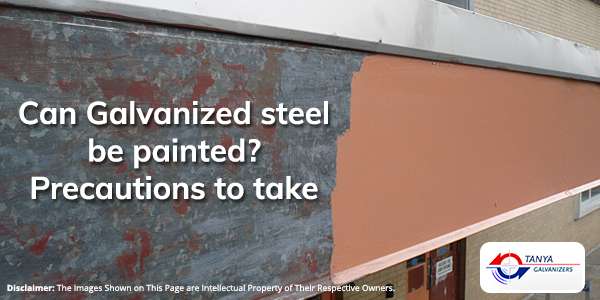According to the industry experts, galvanizing could present several challenges when undertaking painting operations. Life can be added to steel surfaces along with its electrochemical activity and surface chemistry with zinc coating. Thus, it results in conditions which lead to adhesion failures with regards to applied organic coatings. Successful painting can be achieved by recognizing the different surface conditions which are presented by weathered and new galvanizing. Effective cleaning operations are then employed for mitigating its effects. It is by choosing coating products which develop enduring and strong bond to galvanized surface that ultimate success is derived.
About Galvanizing
It is the term used for metallurgical process which applies zinc metal layer over steel surface for avoiding steel corrosion. During the reaction, zinc layer is found to sacrifice itself for protecting underlying steel substrate. The zinc during the electrochemical reaction functions as the anode, while steel represents the cathode. With adequate zinc being used, corrosion can be avoided to protect steel.
Galvanizing types
Zinc through HDG (hot dip galvanizing) process can be used for coating piping, structural steel along with other steel shapes. The process involves using of hot acid baths in combination to clean steel. It is to eliminate scale and rust followed by immersion and fluxing into molten pure zinc bath heated in range 820 – 860F. HDG achieves zinc thickness within the range of 2-8mils for steel varieties and dependent upon immersion time in bath. HDG thickness of range 20-30 mils is achieved with few reactive steels. Sheradizing and electroplating are the other methods used for applying zinc layer to steel.
Duration of protection provided to steel with zinc coating
Corrosion may take place with zinc. As exposed to atmosphere, chemical reaction begins with oxygen, carbon dioxide, moisture & soluble airborne salts such as sulfates and chlorides. Zinc corrosion rate depends upon environmental exposure and severity. According to reports, galvanized steel surface of zinc of 2 mils tend to develop just 5% rusting that too after around 35 years of getting exposure in the industry environment!
How galvanizing can be painted?
Replacing lost corrosion protection: Although atmospherically stabilized zinc corrosion rate is low, zinc layer’s thickness is reduced with time. Atmospheric exposure severity and original zinc thickness is likely to affect galvanizing life. With corrosion, zinc layer gets reduced and its capability to safeguard underlying steel substrate gets diminished, while galvanic protection provided by zinc is lost. Here, polymer overcoating application is to be considered for extending the structure life.
Using Duplex System for extending life of galvanizing
Situations may come where immediate overcoating of HDG will be necessary for extending the structure’s life beyond zinc layer’s longevity. Synergistic effect gets created to extend galvanizing life as new HDG is used to overcoat along with organic coating. The latter tends to act as a barrier by preventing moisture from penetrating, thus slowing down zinc layer corrosion. Moreover, life of galvanized coating is extended by factor from 1.4 – 2.7 times the total of lives that has been predicted for each layer of coating.
For enhancing appearance
HDG often is overcoated using organic coating, since metallic gray spangling’s natural appearance may be objectionable. This is to impart specific desired color through architectural rendering or to enhance its appearance. In such situations, adding of an overcoat is sure to extend the galvanized layer’s life.
Get in touch with us via Email: info@galvanizers.co.in or
Phone: (0265) 2632517 (O) / +91 8000842648


